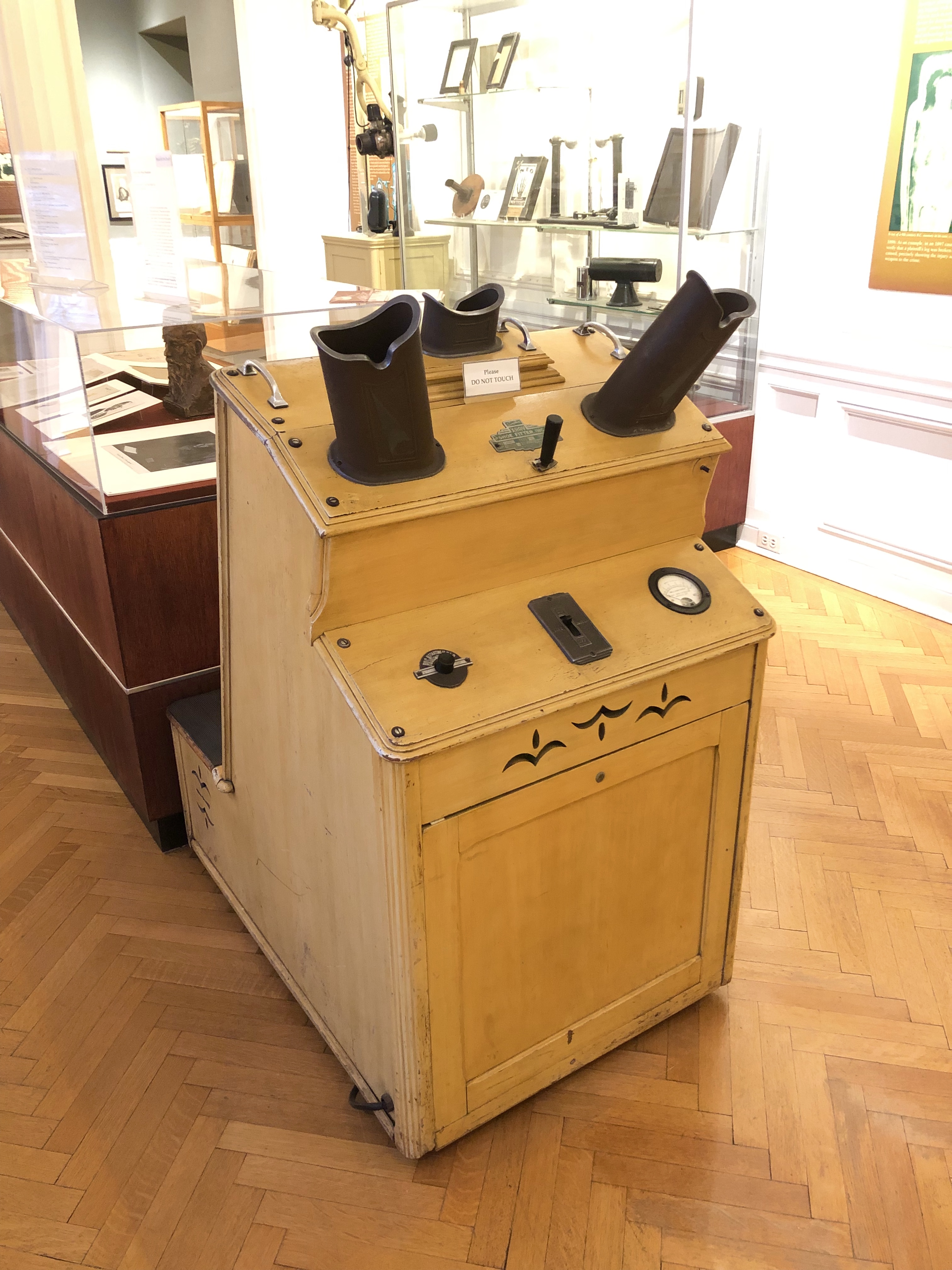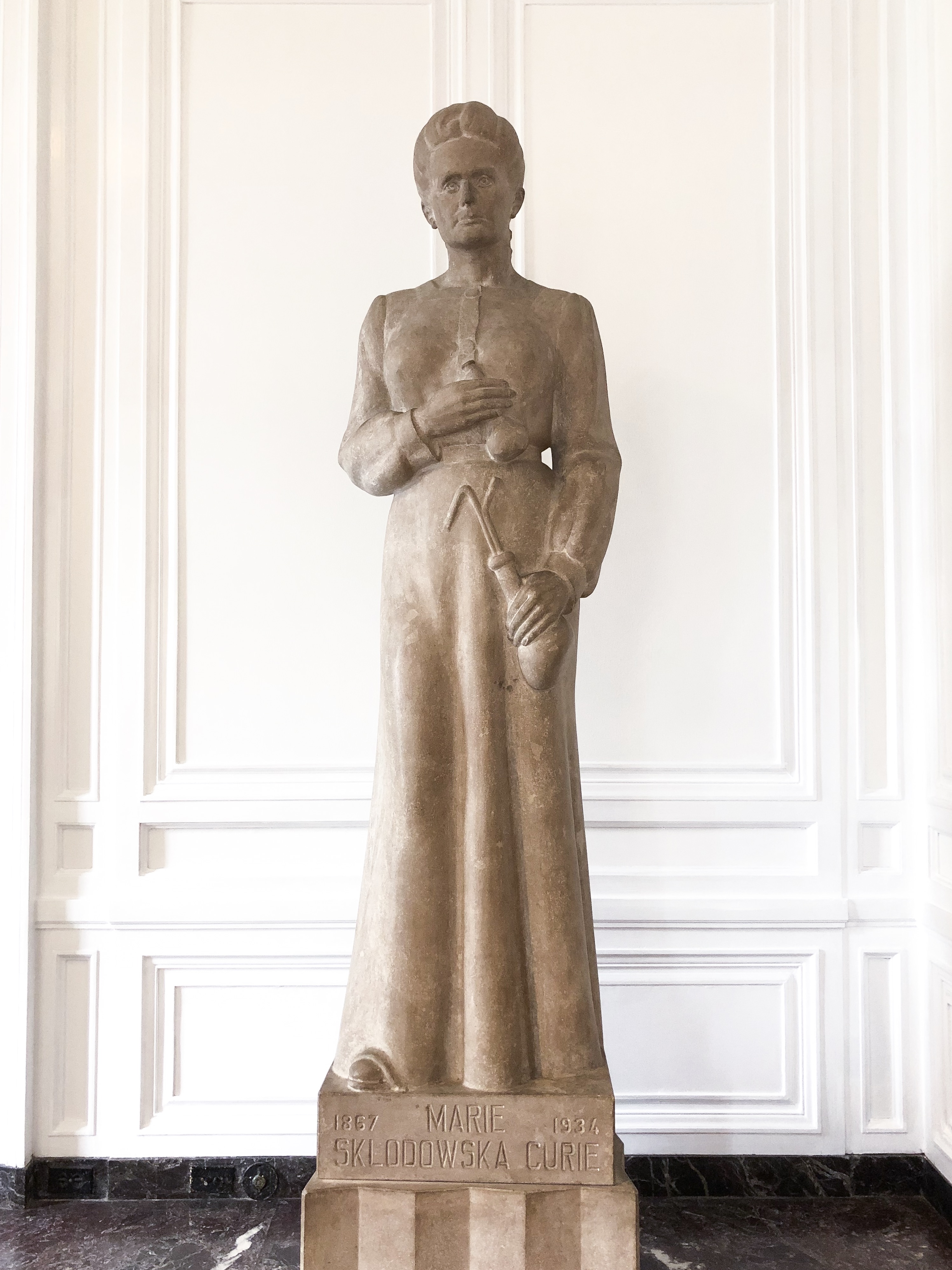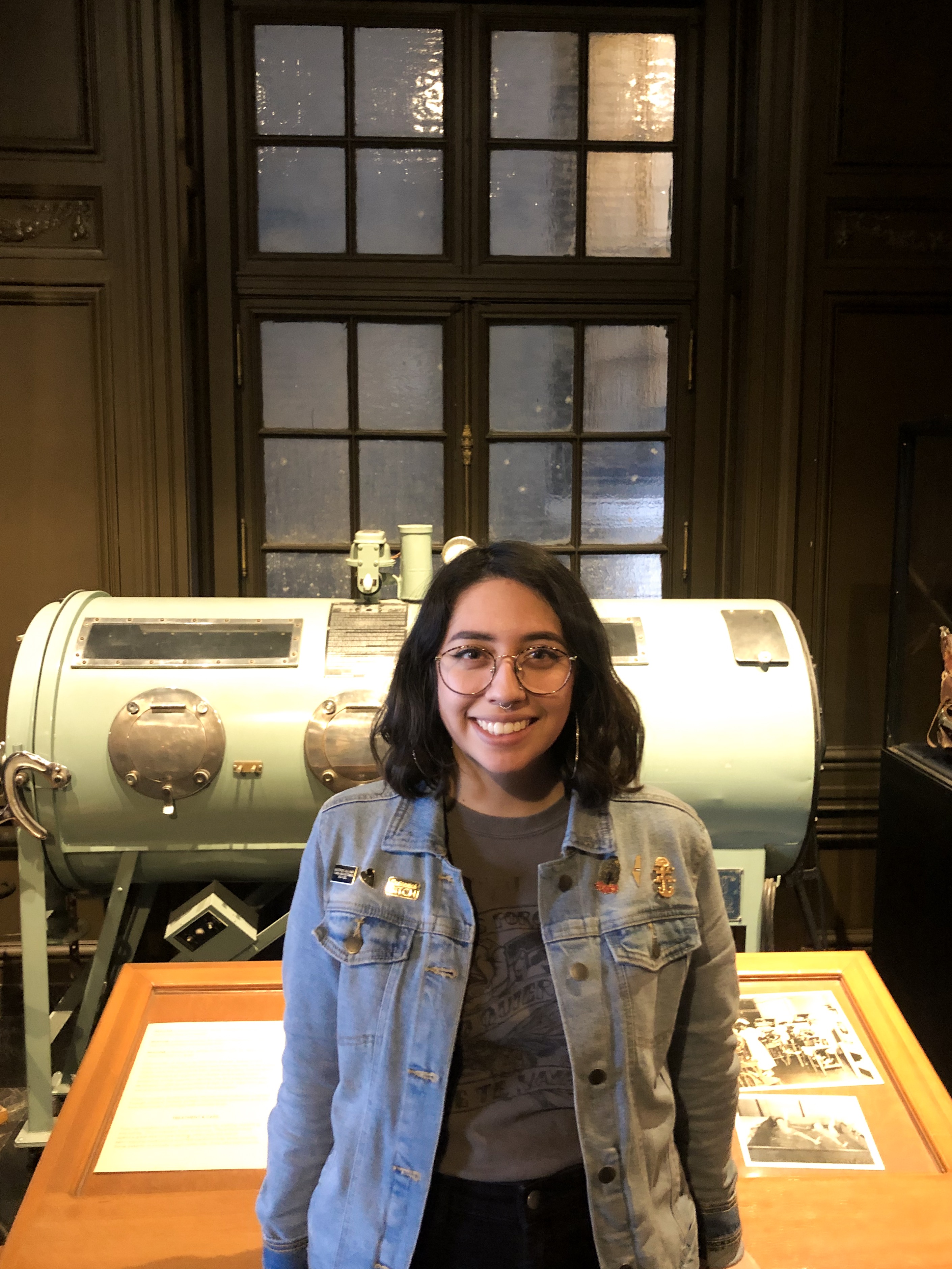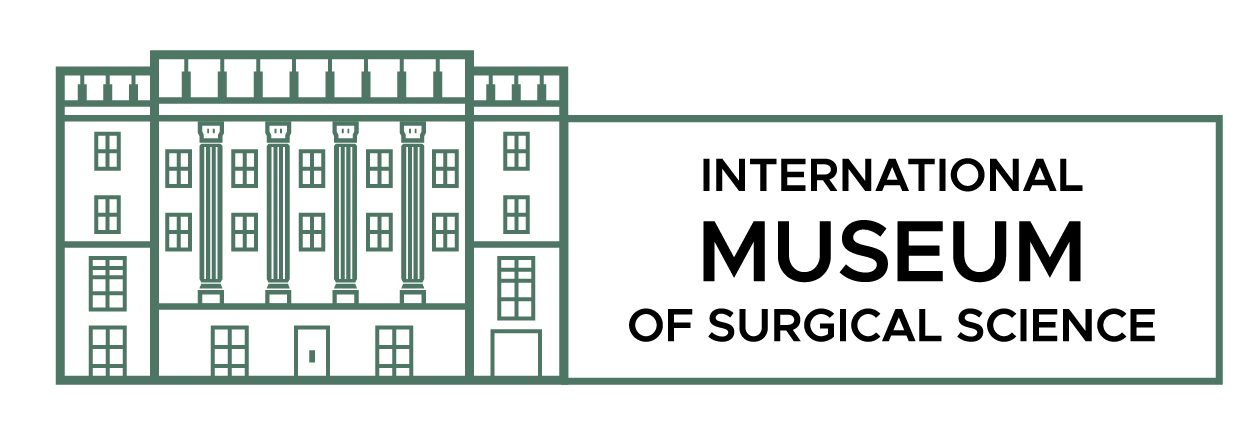Published by Education Intern, Jackie Guataquira
Over the past twelve weeks, I’ve been continuously reflecting on my time here at IMSS, keeping a journal to do so. The experiences I’ve had and the knowledge and skills I’ve gained over the course of my internship so far have genuinely been very valuable.
I recently revisited a draft of the first social media post I wrote and noticed how much I’ve improved since the beginning of my internship. When I began, I was still finding my voice for social media-specific writing. I found that I was so used to academic writing that I really had to keep in mind how to adjust my writing style from that of graduate-level research. I began to focus on how I could disseminate the interesting information I learned through my research in a digestible and captivating manner to the Museum’s Instagram, Facebook, and Twitter followers.
I noticed it becoming easier over time; I’ve been able to synthesize facts about the Museum’s objects or notable historical figures in the fields of science and medicine to be attention-grabbing yet informative to those scrolling through their social media feeds.
The research I was conducting wasn’t solely for the purpose of informing the public on a digital platform, but also for sharing with actual Museum visitors through tours. While I have given tours in the past at a previous art gallery internship, this was the first time I was essentially designing a tour from scratch. A few weeks in, I was deciding what my framework would be, and I began by asking myself a few questions—what objects and topics within the Museum was I excited about? How could I take that excitement and allow it to fuel me in creating a tour that guests would leave not only having had an educational experience but also an enjoyable time?
The x-ray room was one of the first exhibits that caught my attention as I made my way through the Museum, taking notes on what my tour could include. Baffled by the fact that x-ray machines were once used as novelty items, I used the X-Ray Shoe Fitter as the foundation, wanting to focus on medical inventions over the last few centuries; I added other objects into the mix, such as the Iron Lung, which is popular among visitors.

The Museum’s X-ray Shoe Fitter, a novelty item once used to sell shoes. Formerly found in shoe stores across the U.S. until the 1950s, the time when the negative effects of unprotected radiation were realized.
After my first few tours, as well as having the opportunity to shadow tours given by others, I realized ways I could expand upon the initial framework of my tour—rather than limiting myself to talking about medical inventions, I decided to expand to the idea of the evolution of medical technology and practices, highlighting the notion that with time we either see facets of the medical field continuously evolve for the benefit of society, or disappear completely.
I began to ruminate on the question “in 10 to 20 years, what are things in our lives that we’ll realize are actually harmful? What will we see phased out in our lifetimes?” I was inspired by a podcast episode of This American Life that I listened to in 2013 that has stuck with me since, titled “Use Only as Directed;” with this in mind, I found a way to incorporate the Pain Management exhibit room into my tour. The episode focuses on acetaminophen, the active ingredient in Tylenol, which is described as “one of the country’s most popular over-the-counter painkillers” (Glass, 2013). This common pain killer also happens to kill the most people, according to government data (Glass, 2013). We once saw heroin marketed in Sears, Roebuck, and Co. catalogs, which is now known to be a Schedule I drug, so to wrap up my tour I like to ask what visitors think might significantly evolve between now and 20 years in the future, or what we may even realize is actually dangerous and will be pulled off the market.

Recreation of a vial of heroin, like those formerly sold in a Sears, Roebuck, and Co. catalog, along with a matted photo of a Bayer advertisement for various medicines, including heroin; used as examples to pass around during the pain management segment of the tour.
One of the most gratifying aspects of the internship has been the exchanges that have taken place with visiting guests. I’ve had fun and thought-provoking conversations with people of all ages, especially while I’ve facilitated drop-in education programs. In one of my journal reflections, I wrote that I really love leading younger kids through the activities because their interactions are always so genuine.
When it came time to begin formulating the capstone to my internship, which is to design a drop-in educational activity of my own, I kept a few things in mind: that I would want it to be a fun experience for people of all ages, and that I’d like participants to have a physical take away from the experience.
The history behind the discovery of radium and its former uses has been something I’ve been drawn to over the course of my internship, and it even came up in podcasts I’ve listened to on my own time (check out the podcast My Favorite Murder’s episode 190: “Lick the Clock”). After its discovery, it was popularly used in paint used on watches and compasses, and even as an ingestible medical treatment. I thought this would be a compelling piece of history that ties in the work of Marie Curie as the co-discoverer of the element, as well as an instance of something that is no longer used today, since it was later realized to be extremely toxic.

Statue of Marie Skladowska-Curie, co-discoverer of radium, in the Hall of Immortals
For my drop-in educational activity, I decided to guide participants through making a paper watch with neon green paper for the face, meant to imitate a radium-painted watch, to allow for a conversation to take place in which historical information about radium could be shared in an engaging way.
Every aspect of the internship, from conducting research to designing tours and an educational program, has built off one another, and I feel more equipped to move forward in my art education graduate program at the School of the Art Institute of Chicago. This semester has been busy, with working full time, graduate school, and an internship, but I’m glad to have had this opportunity in my first semester as a graduate student, setting me up for success in my continued educational endeavors.

Education intern, Jackie, in front of the Iron Lung
References:
Glass, I. (Host). (2013, September 20). Use only as directed [Audio Podcast]. Retrieved from https://www.thisamericanlife.org/505/use-only-as-directed.
Jackie Guataquira was the Fall 2019 Education Intern at the International Museum of Surgical Science. She is a designer and youth arts educator based in Chicago. She has an educational background in graphic design and museum and exhibition studies and is currently attending the School of the Art Institute of Chicago, pursuing a master’s in Art Education. She has gained a passion for design and the arts, youth education, and community work through her educational and professional experiences.


